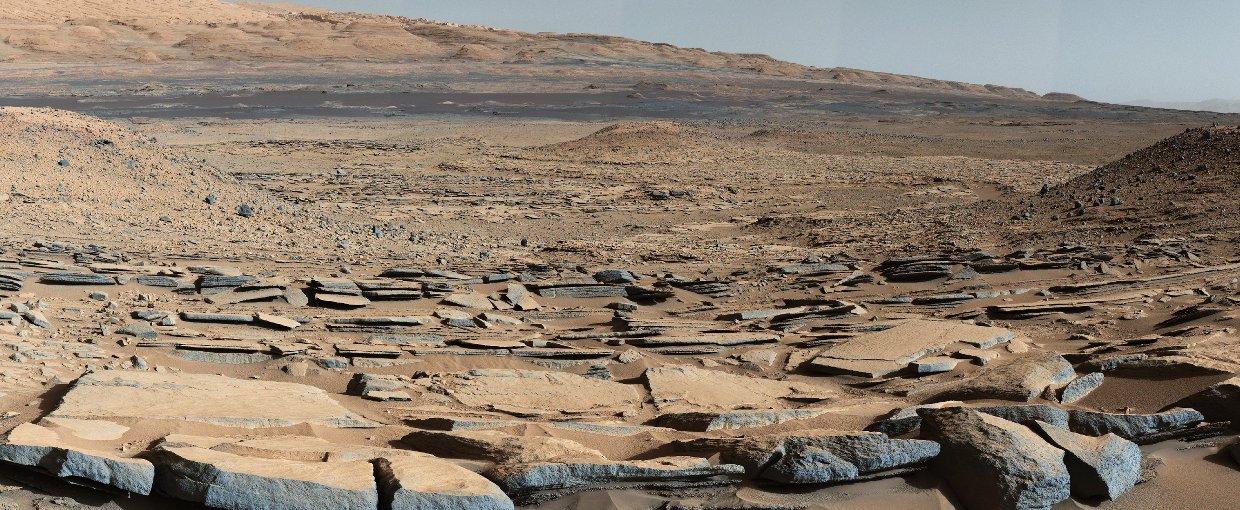How Martian Microbes Could Survive in the Salty Puddles of the Red Planet
To survive on Mars, bacteria need a tolerance for salt and cold.

In extraordinarily salty puddles of water resembling ones you might find on Mars, bacteria can survive getting completely dried out, suggesting that the Red Planet may be more habitable than previously thought, according to a new study.
Since there is life virtually wherever there is water on Earth, research into whether Mars was once capable of hosting life — and whether it still might host it — typically focuses on the past or current presence of liquid water on or below its surface. However, the cold, thin atmosphere that Mars has nowadays means liquid water likely cannot exist on its surface for any length of time.
Still, just before dawn, evaporating frost on the Martian surface can drive humidity up to 100 percent, said the study's senior author Mark Schneegurt, an astrobiologist at Wichita State University in Kansas. At its peak, the humidity on Mars can resemble the drier parts of the Atacama Desert in Chile, the driest place on Earth aside from its poles, which nevertheless is home to life.
Related: Cold World, Hot Topic: Can Microbes Survive on Mars?
In addition, a variety of salts often found on the surface of Mars could absorb this moisture. Because the briny fluids that result have a lower freezing point than water, they could withstand the frigid temperatures that prevail on the Red Planet's surface — and potentially harbor life.
However, the humidity on the Martian surface plummets during the daytime as temperatures rise. As such, any microbes on Mars would likely have to deal with constantly getting dried out.
To see if life on Mars could survive these cycles of desiccation, scientists experimented with two species of bacteria taken from two highly salty areas — Hot Lake in Washington and the Great Salt Plains in Oklahoma. They grew them in the lab in a solution that was half water and half magnesium sulfate, commonly known as Epsom salt, a kind of salt common on the Martian surface.
Get the Space.com Newsletter
Breaking space news, the latest updates on rocket launches, skywatching events and more!
The researchers next dried small drops of this bacterial-laden solution using water-absorbing chemicals under a vacuum, to mimic how brines on the Martian surface might evaporate. Finally, they locked the dried drops in a jar with either regular water or saltwater and let the jar fill with humidity.
Within a day, the scientists found the dried drops absorbed enough moisture from the air to make a liquid brine, at which point the bacteria revived and began to grow. Typically more than half the cells survived.
"We have the first data showing the growth of bacteria after drying and then rehydration through humidity alone, in the presence of salts that absorb moisture from the air," Schneegurt told Space.com.
These findings may expand what scientists consider habitable when it comes to dry or cold worlds, Schneegurt said. It also could mean there is a greater risk than previously thought that Earth microbes can contaminate other worlds.
In the future, the researchers may examine how well these bacteria perform at the colder temperatures typical of Mars, as well as with other kinds of salts found on the Martian surface, Schneegurt said.
The scientists detailed their findings on June 21 at the annual meeting of the American Society for Microbiology in San Francisco.
- What on Earth Could Live in a Salt Water Lake on Mars? An Expert Explains
- Salty Martian Water Could Have Enough Oxygen to Support Life
- Groundwater on Mars? Salty Antarctic Pond Could Reveal Clues
Follow Charles Q. Choi on Twitter @cqchoi. Follow us on Twitter @Spacedotcom and on Facebook.
Join our Space Forums to keep talking space on the latest missions, night sky and more! And if you have a news tip, correction or comment, let us know at: community@space.com.

Charles Q. Choi is a contributing writer for Space.com and Live Science. He covers all things human origins and astronomy as well as physics, animals and general science topics. Charles has a Master of Arts degree from the University of Missouri-Columbia, School of Journalism and a Bachelor of Arts degree from the University of South Florida. Charles has visited every continent on Earth, drinking rancid yak butter tea in Lhasa, snorkeling with sea lions in the Galapagos and even climbing an iceberg in Antarctica. Visit him at http://www.sciwriter.us









